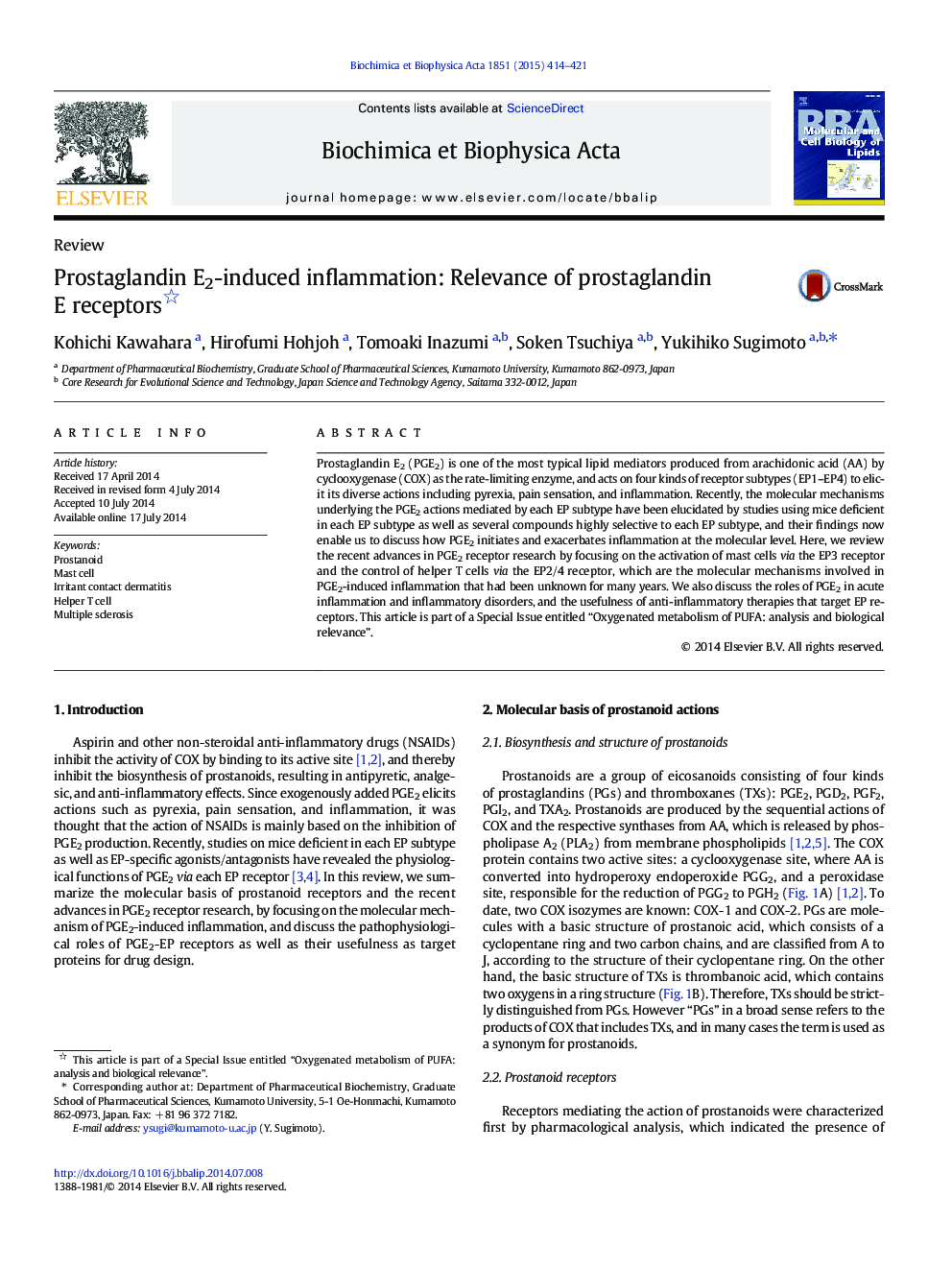| Article ID | Journal | Published Year | Pages | File Type |
|---|---|---|---|---|
| 1949130 | Biochimica et Biophysica Acta (BBA) - Molecular and Cell Biology of Lipids | 2015 | 8 Pages |
•Prostaglandin E2 (PGE2) is a lipid mediator produced by cyclooxygenases.•PGE2 elicits its diverse actions via four receptors, EP1 to EP4.•PGE2 activates mast cells via the EP3 receptor in mouse skin.•PGE2 facilitates Th1 differentiation and Th17 cell expansion via EP2/4 receptors.•Through these mechanisms, PGE2 plays a role in the pathogenesis of immune disorders.
Prostaglandin E2 (PGE2) is one of the most typical lipid mediators produced from arachidonic acid (AA) by cyclooxygenase (COX) as the rate-limiting enzyme, and acts on four kinds of receptor subtypes (EP1–EP4) to elicit its diverse actions including pyrexia, pain sensation, and inflammation. Recently, the molecular mechanisms underlying the PGE2 actions mediated by each EP subtype have been elucidated by studies using mice deficient in each EP subtype as well as several compounds highly selective to each EP subtype, and their findings now enable us to discuss how PGE2 initiates and exacerbates inflammation at the molecular level. Here, we review the recent advances in PGE2 receptor research by focusing on the activation of mast cells via the EP3 receptor and the control of helper T cells via the EP2/4 receptor, which are the molecular mechanisms involved in PGE2-induced inflammation that had been unknown for many years. We also discuss the roles of PGE2 in acute inflammation and inflammatory disorders, and the usefulness of anti-inflammatory therapies that target EP receptors. This article is part of a Special Issue entitled “Oxygenated metabolism of PUFA: analysis and biological relevance”.
